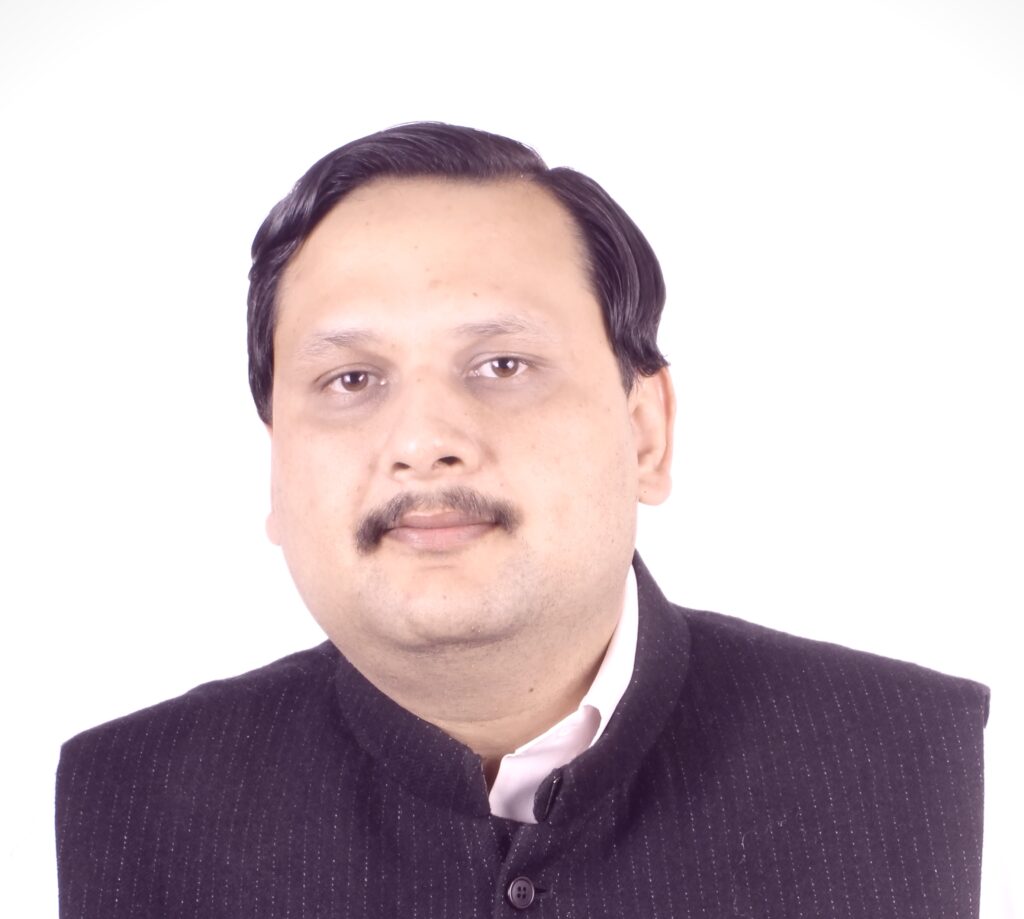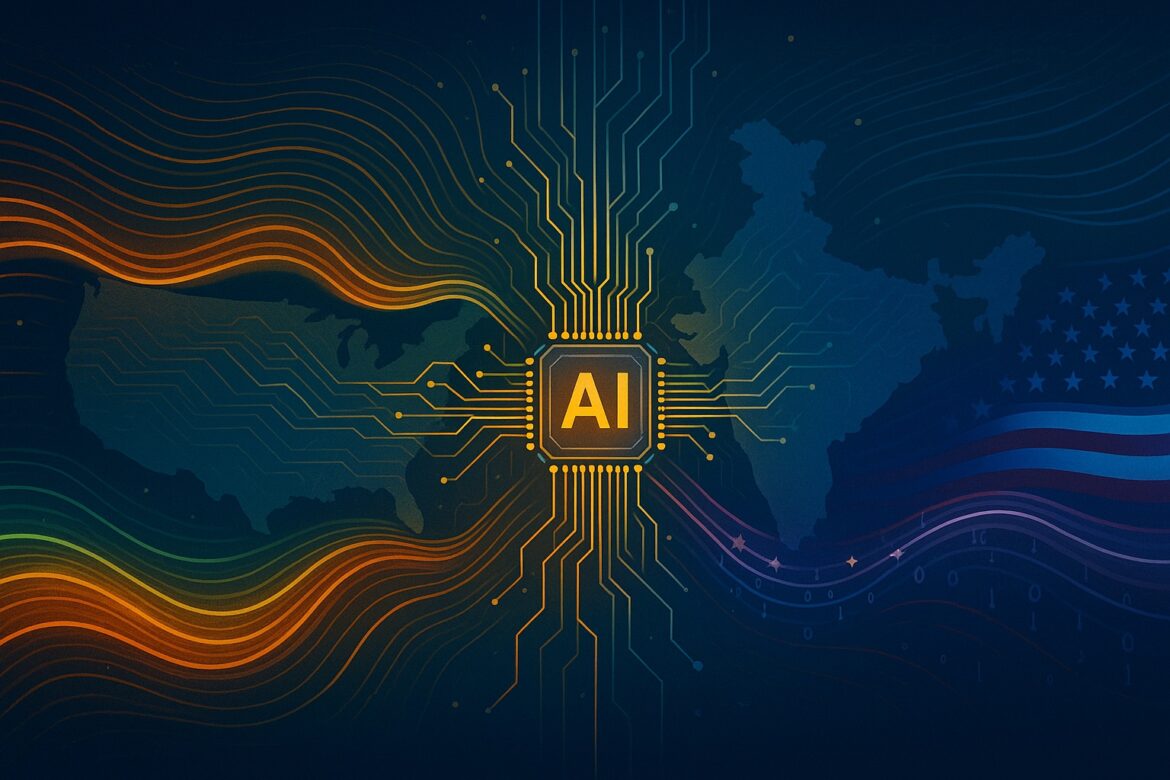As ChatGPT hit the headlines, it seemed overnight the future was here. However, as Google CEO Sundar Pichai explained to the world’s top leaders at the AI Action Summit, this is “the largest change of our lifetimes.”
What we see happening is not merely a technological explosion; it is a whole rewiring of how intelligence gets constructed, gets shared, and gets used. At the lead are the globe’s two most crucial innovation motors: the US and India.
The United States is still the world’s AI superpower, generating almost 40 percent of all new AI unicorns and the most advanced foundational models. India, with 806 million internet users and more than 1.2 billion mobile connections, is on the verge of becoming the largest and most dynamic real-world testbed for deploying AI. This is not simply a tale of size. It is a tale of momentum, demographic power, and technological voracity.

India’s internet is not just large; it is ravenous. In 2023, India’s mobile phones gobbled up more than 17 exabytes of data per month, growing at over 25 percent every year. It’s one of the world’s most rapidly expanding digital worlds with unparalleled diversity: dozens of languages, rural and urban extremes, old and new infrastructure existing alongside one another. With its median age under 30 and two-thirds of the population resident outside of major cities, India has emerged as a training ground, a generative AI stress test, and a global launchpad.
The world is taking notice. Microsoft CEO Satya Nadella has recently referred to India’s developer community as “unstoppable.” Already, GitHub has 13 million Indian developers, ranking second only to the United States, and Microsoft is projecting India to overtake America by 2027. It is not merely symbolic. It represents a shift in world development capability. Microsoft has invested three billion dollars to grow its cloud and AI infrastructure in India and committed to equipping two million Indian professionals with AI skills by 2025.
The capital is following the talent. Since 2020, over 140 Indian generative AI startups have collectively raised over 1.5 billion dollars from investors around the world. This is a sign of increasing confidence in India not only as a back office, but as a full-fledged AI hub. Indian firms are building their own large language models and collaborating directly with international research labs. Adoption is speeding up too. Almost 90 percent of Indian knowledge workers now employ generative AI in their work, far higher than the international average.

But the next big step will not be solely about more intelligent models. It will be more context-sensitive systems. That is where Model Context Protocols, or MCPs, fit in. MCPs function like a shared vocabulary for AI agents so that they can exchange user intent, legal boundaries, cultural sensitivity, and privacy options across systems. Nvidia’s Jensen Huang boiled it down well, asserting that each IT department will be double as an HR department for AI colleagues soon.
This is not simply a technical progression. It’s a shift in the way that intelligence moves. Picture a district clinic in Maharashtra employing a plain smartphone to get a patient’s chest X-ray scanned. Using MCPs, that scan would be anonymized in an instant, transmitted to a top cancer model in America, analyzed within seconds, and the results delivered back securely to the local physician. No other software, no legal exposure. Just intelligence going where it must go.
Or imagine a school in Rajasthan where a student is having trouble with fractions. An AI tutor assists in Hindi and knows the learning pace of the student. If the child subsequently requires assistance with advanced calculus, the same system can hand off the session to a coach in Boston with no interruption in continuity. The tutor keeps everything in mind, adjusts to the new level, and never loses context. That is the power of AI that is truly global and personal.
Governments are moving ahead. The India–U.S. Initiative on Critical and Emerging Technologies, or iCET, puts AI interoperability at the same priority level as semiconductors, space collaboration, and telecom. White House national security adviser Kurt Campbell said the objective is to create systems that are open, trusted, and secure. Not merely connecting systems, but having them operate with trust and accountability across borders.
The strategic potential is gigantic. India offers scale, variety, and increasing digital talent supply. The U.S. contributes frontier-grade computing, foundation models, and funding. Combined, they create a strong feedback cycle. India contributes the world’s most varied data. The U.S. purifies that data with advanced algorithms. The end result is more accurate, culture-sensitive, and deployable AI worldwide.
Infosys co-founder Nandan Nilekani put it best: “Instead of people adjusting to technology, the technology will adjust to people.” MCPs make that promise a reality. They make sure AI doesn’t just compute, but understands. They allow models to converse with one another, remember your intent, and obey your local laws all without disrupting flow.
If the United States and India keep at this rate, investing in people, building border-spanning laboratories, and collaborating on standards, they will not just gain from the AI boom. They will set its terms. The outcome might be an open global platform where a Gujarati farmer, a Detroit schoolteacher, and a Hyderabad startup entrepreneur all reap and feed into the same wise network in real time.
Disclaimer: The opinions and views expressed in this article/column are those of the author(s) and do not necessarily reflect the views or positions of South Asian Herald.






